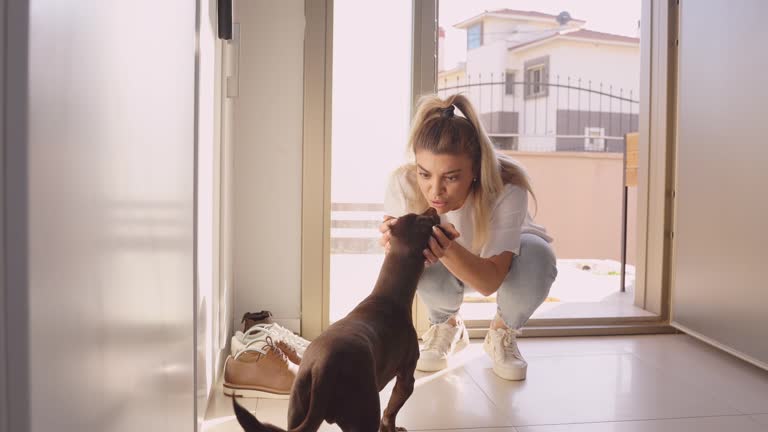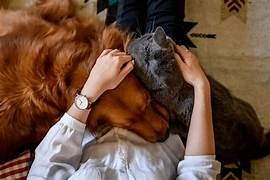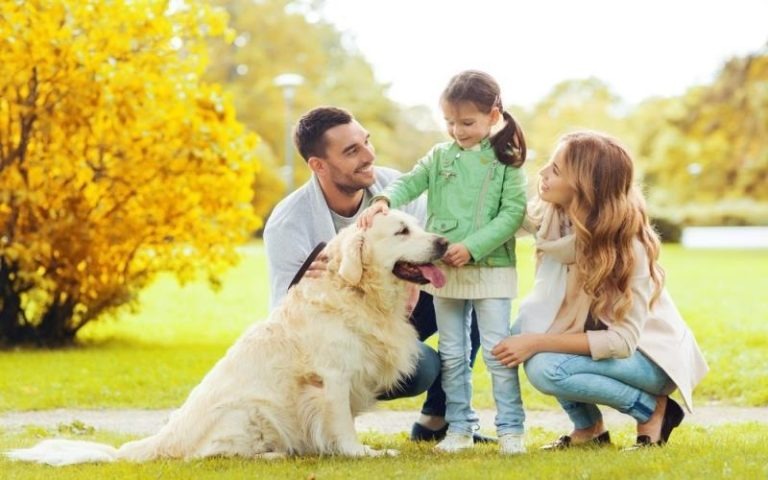
What Your Pet Thinks When You Leave the House
Ever wondered what’s going through your pet’s mind when you head out the door? Delve into the intriguing world of animal emotions and uncover the truth about their feelings when you leave.
🐶 Pet Star
23 min read · 2, Feb 2025

The Mystery of the Empty House
If you’re like most pet owners, you’ve probably experienced that heart-wrenching moment when you leave the house, and your pet looks up at you with those big, soulful eyes. Whether it’s a dog wagging its tail or a cat sitting by the door, you can’t help but feel a little guilty. But what exactly is your pet thinking during this time? Does it understand that you’ll come back? Or is it simply lost in confusion and anxiety?
Understanding the psychology of your pet when you leave the house goes beyond just reading their body language. It dives deep into their emotional world, exploring attachment styles, memory, and the way they experience time. The truth might surprise you. The emotional connection between pets and their owners is much stronger than we often realize. So let’s uncover the mystery of what goes through your pet's mind when the door shuts behind you.
The Impact of Attachment: Pets and Their Humans
The bond you share with your pet is powerful. For many animals, especially dogs and cats, their attachment to their owners is similar to the attachment a young child feels towards their parent. This connection makes them keenly aware of your comings and goings. When you leave, it’s not just a physical absence but an emotional void that your pet experiences.
Dogs, for example, are pack animals by nature. In the wild, they rely on their pack for survival, and when you leave, they may feel a sense of separation anxiety. While some dogs are perfectly fine with a bit of alone time, others struggle significantly when they’re left behind. They might bark, whine, or act out, all signs of distress that stem from a fear of abandonment.
Cats, on the other hand, are often seen as more independent. However, that doesn’t mean they don’t experience the same feelings of attachment. Cats may not exhibit the same outward signs of distress as dogs, but many still feel a sense of unease when their owners leave. They might engage in behaviors like scratching furniture or hiding to cope with the emotional tension of being alone
The Role of Routine in Pet Behavior
Pets are creatures of habit. If you have a consistent routine, your pet quickly learns what to expect. The sound of your keys jingling or the act of you putting on your shoes might be enough to signal to your pet that you’re about to leave. This association creates anticipation in your pet’s mind, but it can also bring a sense of dread.
Many pets, particularly dogs, rely on routines for a sense of stability. They know when it’s mealtime, walk time, or time to play. But when one part of this routine is disrupted—like your departure—they may feel a sense of insecurity. They may not understand why you’re leaving, and that can create anxiety.
Interestingly, some pets develop coping mechanisms. A dog might chew on a favorite toy or settle into their bed, while a cat may curl up in a safe spot, waiting for your return. These are survival instincts at play, as your pet seeks comfort and familiarity in the face of uncertainty.
The Emotional Experience: How Pets Perceive Time
One of the most fascinating aspects of understanding what your pet thinks when you leave is realizing how they perceive time. Dogs and cats experience time differently from humans. While we think of time in terms of hours or minutes, pets don’t have the same concept of time passing in a linear way. For them, the duration of your absence might feel like an eternity, especially if they’re not familiar with the concept of “I’ll be back in an hour.”
This sense of time—or rather the lack of it—can contribute to their anxiety. Dogs in particular are known to experience what’s called “separation anxiety.” When they’re left alone, they may become disoriented, unsure of when or even if you’ll return. This can cause them to act out or become visibly distressed, barking at the door, pacing around the house, or even engaging in destructive behavior like chewing on furniture.
For cats, the perception of time can vary. While they may not show the same degree of anxiety as dogs, many cats can still feel confused and unsettled by your absence. They may wait by the door or window, watching for your return, signaling their emotional attachment and awareness of your absence.
Signs of Distress: What to Look For
How do you know when your pet is struggling with your departure? In dogs, signs of separation anxiety are often more obvious. If your dog is left alone, you may notice a variety of behaviors that indicate distress. Barking excessively, drooling, pacing, or even attempting to escape the area where they are confined are all signs that your dog is anxious.
For cats, the signs of distress can be more subtle. A cat might stop eating or drinking, retreat to a hiding spot, or engage in excessive grooming. Some cats will vocalize their displeasure, but many will simply wait for their owners to return. It’s important to observe these behaviors to ensure that your pet’s emotional well-being is being maintained when you leave the house.
Coping Strategies: Helping Your Pet Feel Secure
If your pet seems to struggle when you leave, there are ways to help ease their anxiety. For dogs, creating a safe, cozy environment can provide comfort. Some owners use calming music or leave an item with their scent behind, such as an old t-shirt, to help soothe their dog’s nerves. Puzzle toys or treat-dispensing devices can also keep them engaged and distracted while you’re away.
For cats, having multiple hideaways or safe spaces around the home can reduce stress. Some cats find comfort in a perch or high vantage point where they feel safe and secure. You can also provide a variety of enrichment toys or even a second pet to keep them company if they enjoy the presence of other animals.
Another technique is gradual desensitization. This involves leaving your pet alone for short periods and gradually increasing the length of time to help them become accustomed to being alone. With time and patience, most pets can learn to cope with your departures in a healthy way.
Conclusion: What’s Really Going On in Your Pet’s Mind?
So, what exactly does your pet think when you leave the house? It’s a mix of confusion, attachment, and a deep desire for your presence. Whether it’s a dog with separation anxiety or a cat missing its favorite human, pets feel the emotional impact of your absence. While they may not understand the concept of time or your specific plans for the day, they certainly feel the void when you leave.
Understanding these emotions can help us better cater to their needs and provide them with the reassurance they crave. With patience, consistency, and a bit of love, we can ease their worries and help them feel secure, even when we’re not around.
Q&A: What Your Pet Thinks When You Leave the House
Q: How can I tell if my dog has separation anxiety?
A: Look for signs like excessive barking, pacing, drooling, chewing furniture, or trying to escape. These behaviors indicate your dog is stressed and struggling with your absence.
Q: Do cats experience separation anxiety the same way dogs do?
A: Not in the same way. While cats can feel anxious or unsettled, their behavior is often more subtle, such as hiding, refusing to eat, or vocalizing when you leave.
Q: Can I help my pet feel less anxious when I leave?
A: Yes! Providing a secure environment, using calming music, and engaging them with toys or safe spaces can help. Gradual desensitization is also effective.
Q: Should I be worried if my pet seems sad when I leave?
A: A little sadness is natural, but if your pet shows signs of distress or anxiety, it’s worth addressing with strategies to help them cope and feel more secure.
Q: Can I train my pet to handle being alone better?
A: Absolutely! Gradual training to desensitize your pet to being alone, along with positive reinforcement, can help them become more comfortable with your departures over time.
Similar Articles
Find more relatable content in similar Articles

The Growing Trend of Therapy and Emotional Support Ani..
Exploring the remarkable rise .. Read More

Pets and Mental Health: The Science Behind Emotional H..
Discover the profound impact o.. Read More

How Climate Change Affects Wild and Domestic Animals...
Climate change is dramatically.. Read More

How Pets Strengthen Family Bonds...
Pets are more than just compan.. Read More
Explore Other Categories
© 2024 Copyrights by rPets. All Rights Reserved.